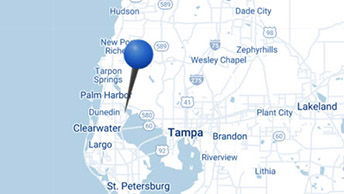Subconjunctival hemorrhage
Subconjunctival hemorrhage in the eye A subconjunctival hemorrhage occurs when a small blood vessel breaks and bleeds into the space […]


Subconjunctival hemorrhage
Subconjunctival hemorrhage in the eye A subconjunctival hemorrhage occurs when a small blood vessel breaks and bleeds into the space […]
Subconjunctival hemorrhage in the eye
A subconjunctival hemorrhage occurs when a small blood vessel breaks and bleeds into the space between the conjunctiva (a thin transparent membrane) and the white of the eye (sclera).
Click here to watch an animation about the human eye
Since the blood is confined in the space between the clear conjunctiva and the white sclera, it can’t drip away or be wiped off. The contrast of the bright red blood lying against the white sclera can be very visible and even look frightening to some, though it is almost always harmless.
Subconjunctival hemorrhage can occur without injury. It is often first noticed when you wake up and look in a mirror. It is also often seen shortly after eye surgeries or procedures. It can occur at any age, but it is increasingly more common with age.
What can cause a subconjunctival hemorrhage?
- Sudden increases in pressure such as violent sneezing or coughing
- Having high blood pressure or taking blood thinners
- Rubbing the eyes
- Trauma
- Procedures that involve eye injections
- Certain eye surgeries
- Viral eye infections
- In rare cases, eye or systemic disease can be an underlying cause
A subconjunctival hemorrhage is not uncommon in newborn infants. In this case, it is believed that the condition is caused by the pressure changes across the baby’s body during childbirth.
Symptoms of subconjunctival hemorrhage
A bright red blotch appears on the white of the eye. The blotch does not cause pain, although a slight foreign body sensation may occur. The blotch of blood can grow larger until it covers most of the sclera. There is no discharge from the eye. Vision does not change.
Diagnosing a subconjunctival hemorrhage
Your eye doctor will perform a slit lamp exam on your eye to make sure there are no other complications or findings like infection or injury.
Treatment of a subconjunctival hemorrhage
The most common remedy for a subconjunctival hemorrhage is time. Nature and time will resorb the blood and the eye’s sclera will slowly return to its natural color. Unfortunately, this can take a week to ten days on average.
The use of artificial tears or cold compress on the eye may alleviate any mild irritation that may occur.
Your doctor may want to check your blood pressure and, if it is abnormally elevated, will probably refer you for a high blood pressure evaluation.
Blood thinners can be the cause of or aggravate a subconjunctival hemorrhage. Your doctor may discourage elective use of aspirin or NSAIDS until the blood clears. NEVER discontinue prescribed medications without your doctor’s recommendation.






